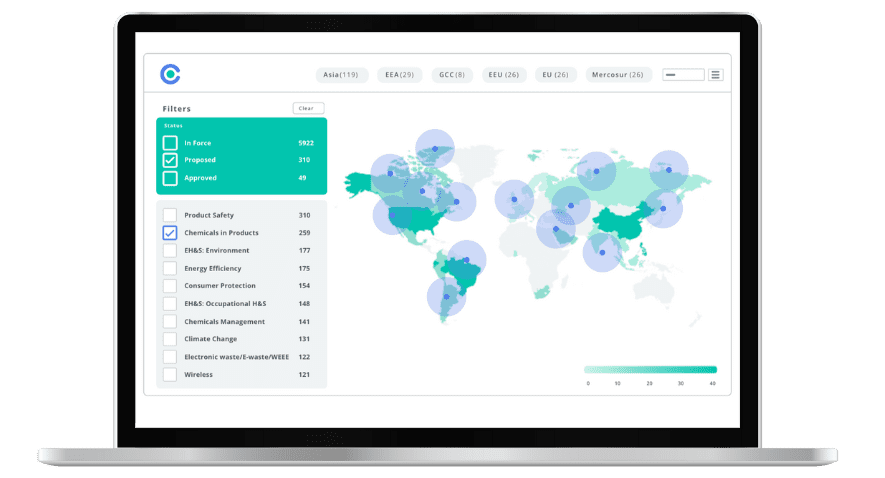
Federal Trade Commission Proposes Amendments to Improve the Energy Labeling Rule

This blog was originally posted on 7th February, 2024. Further regulatory developments may have occurred after publication. To keep up-to-date with the latest compliance news, sign up to our newsletter.
AUTHORED BY KELLY BUGIERA, SENIOR REGULATORY COMPLIANCE SPECIALIST, COMPLIANCE & RISKS
Introduction
Energy efficiency regulations apply to energy-using and energy-related products which are defined as any item/good having an impact on energy consumption during use.
Manufacturers of consumer electronics and household appliances are particularly impacted by laws and regulations that contain mandatory energy labeling requirements and energy efficiency requirements for products.
The Federal Trade Commission (“FTC”) is proposing amendments with the goal to improve the Energy Labeling Rule (“Rule”). In this blog, we give an overview of these proposed amendments.
Proposed Amendments
Amendments include energy labels for several new consumer product categories, as well as changes to current label display requirements. The Notice of Proposed Rulemaking (“NPR”) seeks comment on labels for the following products:
- Air cleaners;
- Clothes dryers;
- Miscellaneous refrigeration products; and
- Portable electric spas.
Comments are also being sought in regard to modifications to existing labels for the following goods:
- Clothes washers;
- Televisions; and
- Several heating products.
In addition, the FTC is soliciting comments on revisions to current requirements for affixing labels on showroom models, as well as several other minor amendments aimed at improving the Rule.
Energy Labeling Rule
The FTC issued the Energy Labeling Rule in 1979, per the Energy Policy and Conservation Act of 1975 (“EPCA”). The Rule mandates energy labeling for major home appliances and other consumer products in order to assist consumers when they are comparing various competing models. The rule contains labeling requirements for:
- Refrigerators;
- Refrigerator-freezers;
- Freezers;
- Dishwashers;
- Water heaters;
- Clothes washers;
- Room and portable air conditioners;
- Furnaces, central air conditioners;
- Heat pumps;
- Plumbing products;
- Lighting products;
- Ceiling fans; and
- Televisions.
Per EPCA, FTC has been granted broad authority to require covered products in the type or class to which the rule applies to bear a label which discloses energy use information. In addition to products specifically listed in the statute or designated by Department of Energy (“DOE”), FTC may also require labels for other consumer products, provided these labels would be likely to assist consumers in making purchasing decisions.
As a result, the FTC has discretion with regard to both the manner in which the label is displayed and the energy-related content of the label. The statute also gives FTC authority to require that retailers provide labels and other disclosures for consumers, regardless of whether they are selling their products online or in a local retail store.
Advance Notice of Proposed Rulemaking (ANPR)
In 2022, the FTC published an Advance Notice of Proposed Rulemaking (“ANPR”) seeking comment regarding possible improvements to the Energy Labeling Rule, including:
- Whether or not the FTC should add new consumer product categories to the labeling program;
- Whether the FTC should change label location to better align with consumer shopping patterns; and
- Streamlining existing requirements.
In addition, the ANPR was seeking comments on other issues including whether the FTC should amend the Rule to:
- Modify label content and format;
- Require links to online Lighting Facts labels consistent with current EnergyGuide requirements;
- Update the electricity cost figure on the Lighting Facts and ceiling fan labels;
- Update the refrigerator and clothes washer labels to remove dated information about test procedures; and
- Ensure the Rule’s consistency with DOE requirements.
The ANPR also sought comments on potential requirements related to repair instructions. In response to the ANPR, the FTC received 48 comments, covering topics which include:
- Potential new product categories;
- Existing product categories;
- Label placement requirements.
Comments on the new NPR
Comments must be received by April 2, 2024.
Those parties who are interested in filing comments online or on paper, should follow the instructions in the Request for Comment part of the SUPPLEMENTARY INFORMATION of the Notice.
Stay Ahead Of Regulatory Changes
Accelerate your ability to achieve, maintain & expand market access for all products in global markets with C2P – Your key to unlocking market access, trusted by more than 300 of the world’s leading brands.
C2P is an enterprise SaaS platform providing everything you need in one place to achieve your business objectives by proving compliance in over 195 countries.
C2P is purpose-built to be tailored to your specific needs with comprehensive capabilities that enable enterprise-wide management of regulations, standards, requirements and evidence.
Add-on packages help accelerate market access through use-case-specific solutions, global regulatory content, a global team of subject matter experts and professional services.
- Accelerate time-to-market for products
- Reduce non-compliance risks that impact your ability to meet business goals and cause reputational damage
- Enable business continuity by digitizing your compliance process and building corporate memory
- Improve efficiency and enable your team to focus on business critical initiatives rather than manual tasks
- Save time with access to Compliance & Risks’ extensive Knowledge Partner network

RoHS Updates – What You Need To Know On The New Exemption Renewal Timeline
Learn about the exemption review process, and what manufacturers should do to ensure that they comply in our latest webinar


